Addicted? American? Broke? This might help…
Rather than one of our typical mind-bending dialogues, here’s some very practical information. If you are actively or recently addicted, live in the U.S., and are low on funds, this may be of use. I see it as getting the most out of the “disease model”. Thanks to Ram Meyyappan for offering to post this to our community.
Drug Addiction and Social Security Disability Benefits
Drug addiction can wreak havoc on an individual’s life and can often prevent an individual from working. What many people do not understand is that drug addiction is actually considered to be a disability by the Social Security Administration (SSA). If you are struggling with drug addiction or drug addiction recovery, you may be able to qualify for Social Security Disability benefits.
Qualifying for Social Security Disability Benefits with a Drug Addiction
It is important to note that even though the side effects of drug abuse can prevent an individual from performing gainful work activity, addiction alone is not enough to qualify a person for Social Security Disability benefits. If, however, the addiction results in other medical conditions, you can qualify for disability benefits due to the resulting conditions. According to the Social Security Blue Book (SSA’s manual on conditions that qualify for benefits), you can qualify for Social Security Disability benefits due to drug addiction if the drug addiction results in one or more of the following:
- Organic mental disorders, which will be evaluated under Section 12.02 of the Blue Book.
- Depressive syndrome, which will be evaluated under Section 12.04 of the Blue Book.
- Anxiety disorders, which will be evaluated under Section 12.06 of the Blue Book.
- Personality disorders, which will be evaluated under Section 12.08 of the Blue Book.
- Peripheral neuropathies, which will be evaluated under Section 11.14 of the Blue Book.
- Liver damage, which will be evaluated under Section 5.05 of the Blue Book.
- Gastritis, which will be evaluated under Section 5.00 of the Blue Book.
- Pancreatitis, which will be evaluated under Section 5.08 of the Blue Book.
- Seizures, which will be evaluated under Sections 11.02 or 11.03 of the Blue Book.
For more information on qualifying for benefits with a drug addiction, visit: http://www.disability-benefits-help.org/disabling-conditions/drug-addiction-and-social-security-disability
Applying for Social Security Disability Benefits with a Drug Addiction
You can apply for Social Security Disability benefits online (http://www.ssa.gov/pgm/disability.htm) or in person at your local Social Security office. When applying for benefits due to drug addiction, you will want to explain to the Social Security Administration how your drug addiction has resulted in one of the qualifying conditions in the Social Security Blue Book. For example, if your drug addiction has resulted in an irreversible personality disorder, you will want to provide the SSA with evidence documenting that you have been diagnosed with the associated personality disorder and proof of treatment. This means providing copies of your clinical records and treatment history.
The Technical Criteria for Social Security Disability Benefits
In addition to proving that you are disabled according to the SSA’s criteria when you apply for disability benefits, you will also need to prove that you meet the technical criteria. If you are applying for SSDI benefits, this means proving that you have earned enough work credits to qualify for the program. The SSA will determine if you have enough work credits to qualify when they pull your work history. For each year that you have worked, you will earn a maximum of four work credits. Depending on your age, a certain number of work credits will be needed to qualify for the SSDI program.
If you do not have enough work credits to qualify for SSDI benefits, you may still be able to qualify for SSI benefits. SSI is a needs-based program. In addition to meeting the SSA’s disability criteria, you must also meet the program’s financial criteria. As of 2013, in order to qualify for SSI benefits you cannot earn more than $760 per month as an individual or $1,060 per month as a couple. Your household assets must also not exceed $2,000 as an individual or $3,000 as a couple.
For more information on SSDI and SSI, visit: http://www.ssa.gov/disability/
Appealing a Denial of Benefits
You will receive notice regarding the SSA’s decision of your disability claim within three to six months of the date of your application. If the SSA decides to deny your application, you have 60 days from the date of the denial notice to file an appeal. The first stage of appeals is a Request for Reconsideration. It takes approximately two to six months to complete this appeal. Unfortunately, most appeals are denied at this level. You have the best chance of overturning the SSA’s denial of your benefits during the second stage of the appeal process, the disability hearing. During the disability hearing you will have the chance to present evidence to an Administrative Law Judge (ALJ) and explain why you need disability benefits. It is in your best interest to hire a disability attorney or advocate prior to attending the disability hearing.
Article by Ram Meyyappan
Social Security Disability Help
 of ice. When spring arrives, it is of no use to try to clear it up all at once. The only thing to do is to let each layer appear one after another as the higher chunk thaws. So one layer thaws and is cleared away, then another, then another. No one can force their way prematurely to the bottom of the heap, but they can rest assured that every layer will finally be revealed and dealt with.
of ice. When spring arrives, it is of no use to try to clear it up all at once. The only thing to do is to let each layer appear one after another as the higher chunk thaws. So one layer thaws and is cleared away, then another, then another. No one can force their way prematurely to the bottom of the heap, but they can rest assured that every layer will finally be revealed and dealt with. This parable corresponds beautifully with the Inuit concept of time. I have come to understand this. From the birth of man and consciousness, in earlier agricultural societies, time was circular. The rhythm of life was cyclical, from the beginning of life in spring through growth, harvest and finally death. Death was followed by rebirth, for nature and for man. The cycle would start all over again. The industrial revolution changed our concept of time, nature did not dictate it any more, but production lines did. Time became linear, just like production and progress. Peak performance was always in demand. Be productive! Act now! Consume now! Be happy now! And be greedy!
This parable corresponds beautifully with the Inuit concept of time. I have come to understand this. From the birth of man and consciousness, in earlier agricultural societies, time was circular. The rhythm of life was cyclical, from the beginning of life in spring through growth, harvest and finally death. Death was followed by rebirth, for nature and for man. The cycle would start all over again. The industrial revolution changed our concept of time, nature did not dictate it any more, but production lines did. Time became linear, just like production and progress. Peak performance was always in demand. Be productive! Act now! Consume now! Be happy now! And be greedy! The old Inuit concept of time sees no time spent, no time wasted, no time gone. Time arrives. Time only arrives. Each and every moment we receive the gift of time to be added to all the gifts of time already received. Yes, nature is cyclical, yet still unpredictable; the variations in weather, the movements of the sea animals and of the ice are never exactly the same. Nature asks of you only attention and time.
The old Inuit concept of time sees no time spent, no time wasted, no time gone. Time arrives. Time only arrives. Each and every moment we receive the gift of time to be added to all the gifts of time already received. Yes, nature is cyclical, yet still unpredictable; the variations in weather, the movements of the sea animals and of the ice are never exactly the same. Nature asks of you only attention and time. change what all this means to me now. I have gained an insight that I would almost call spiritual, where even my ancestors and the story of my extended and immediate family belong. And where all of you (in this community) belong. Instead of disconnection there is now connection, over space and over time. There is, in each moment, attention, time and power to grow.
change what all this means to me now. I have gained an insight that I would almost call spiritual, where even my ancestors and the story of my extended and immediate family belong. And where all of you (in this community) belong. Instead of disconnection there is now connection, over space and over time. There is, in each moment, attention, time and power to grow.

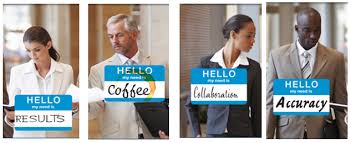
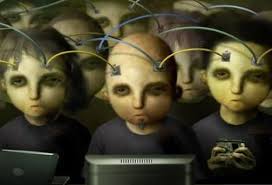
 too religious, dogmatic, disempowering, cultish. Which is unfortunate because although 12-step is not the only way to get sober, it is one way, and it’s been effective for millions of people over the past 80 years.
too religious, dogmatic, disempowering, cultish. Which is unfortunate because although 12-step is not the only way to get sober, it is one way, and it’s been effective for millions of people over the past 80 years.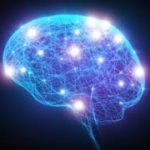 In recent years I’ve been studying neuroplasticity on an informal basis and applying its principles to my daily life, especially vis-à-vis my addictive propensities: Chocolate truffles! Mad Men! Facebook!
In recent years I’ve been studying neuroplasticity on an informal basis and applying its principles to my daily life, especially vis-à-vis my addictive propensities: Chocolate truffles! Mad Men! Facebook!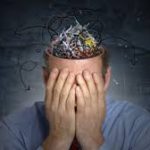 strengthens your capacity to do so again. Thanks to your malleable brain, the more you do something sober the easier it becomes. But you may need to muddle through a thousand situations sober before it comes as naturally as it did when you were drunk. It’s hard for most of us to stick to our resolve that many times. But with the support of others it is possible.
strengthens your capacity to do so again. Thanks to your malleable brain, the more you do something sober the easier it becomes. But you may need to muddle through a thousand situations sober before it comes as naturally as it did when you were drunk. It’s hard for most of us to stick to our resolve that many times. But with the support of others it is possible.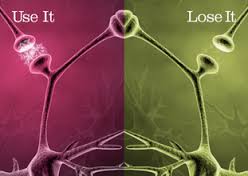 AA contends that because our willpower has “failed utterly” to get us sober, we have no recourse but God. Really? Well, what does every participant at every meeting find every time? What is the common denominator? Not God, but other people getting sober. We find community. The generous support of other human beings carries us when we cannot carry ourselves.
AA contends that because our willpower has “failed utterly” to get us sober, we have no recourse but God. Really? Well, what does every participant at every meeting find every time? What is the common denominator? Not God, but other people getting sober. We find community. The generous support of other human beings carries us when we cannot carry ourselves.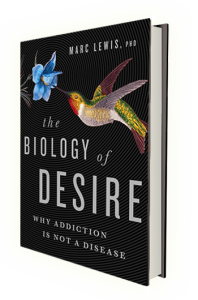 Informed by unparalleled neuroscientific insight and written with his usual flare, Marc Lewis’s The Biology of Desire effectively refutes the medical view of addiction as a brain disease. A bracing and informative corrective to the muddle that now characterizes public and professional discourse on this topic.” —Gabor Maté, M.D., author of In The Realm of Hungry Ghosts: Close Encounters With Addiction
Informed by unparalleled neuroscientific insight and written with his usual flare, Marc Lewis’s The Biology of Desire effectively refutes the medical view of addiction as a brain disease. A bracing and informative corrective to the muddle that now characterizes public and professional discourse on this topic.” —Gabor Maté, M.D., author of In The Realm of Hungry Ghosts: Close Encounters With Addiction
Recent Comments